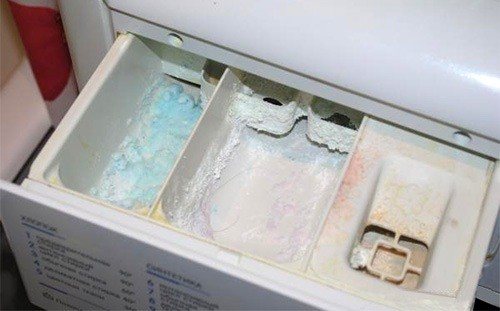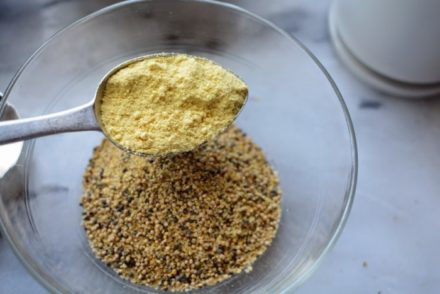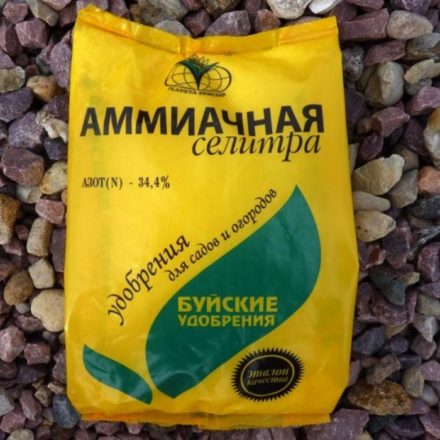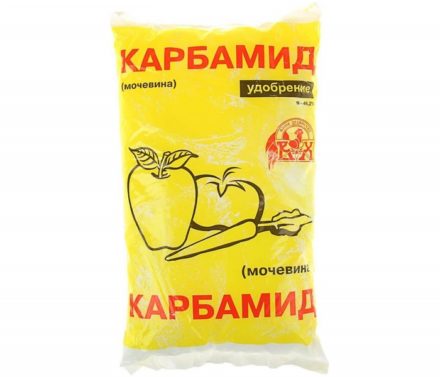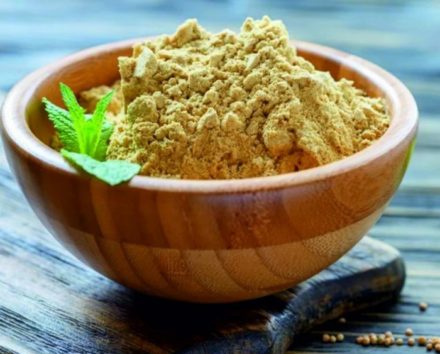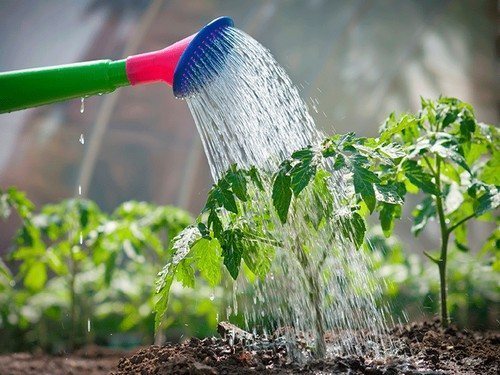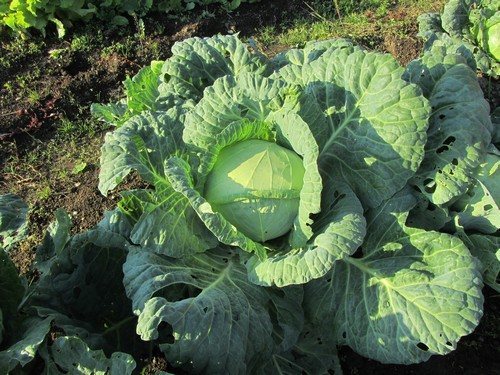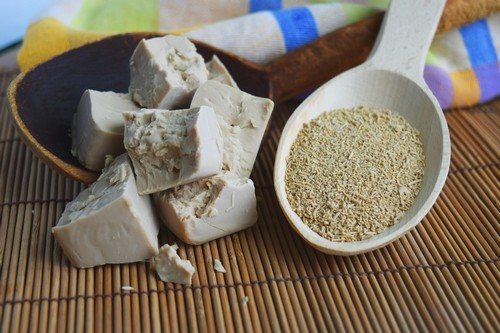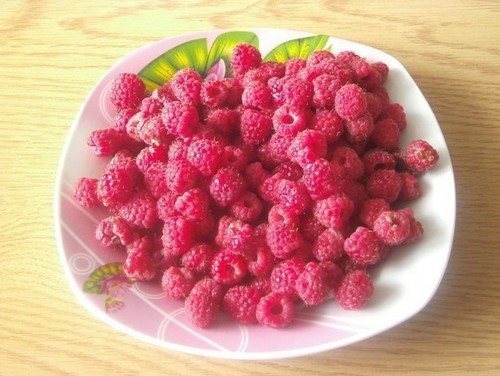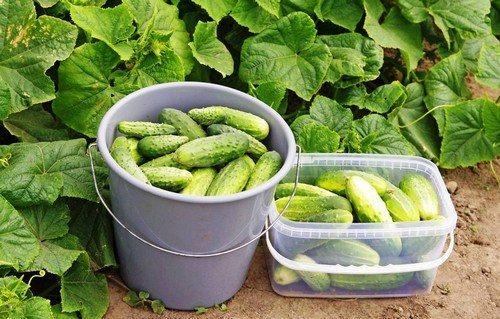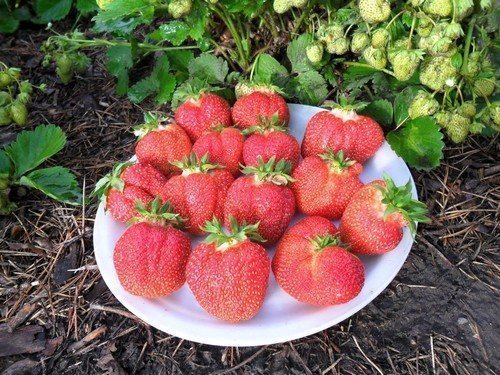Everyone knows about the use of mustard in cooking and medicine. But not everyone knows that this piquant seasoning can be used in the garden and vegetable garden. Mustard powder is an excellent means of protecting crops from pests and insects. But in order to achieve the desired effect, you should know how to properly use this hot seasoning.
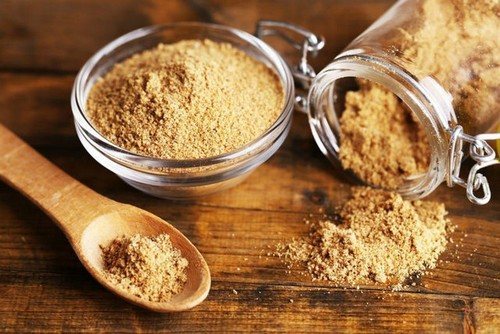
Ways to protect garden plants
Various garden and vegetable garden pests cause a lot of trouble for gardeners trying to protect their plantings. Specialized stores offer a variety of chemicals for fighting insects. But some summer residents prefer folk remedies, including mustard powder.
The hot seasoning is not only able to cope with pests, but also has a number of other advantages:
- environmentally friendly;
- does not harm people, animals, birds and the plants themselves;
- does not emit an unpleasant odor, unlike insecticides;
- is easily washed off by rain, without accumulating in leaves, fruits;
- is available;
- does not require large material costs.
Correctly using mustard, you can rid the site of invasions of the Colorado potato beetle, aphids, slugs, butterflies, fleas, caterpillars and many other harmful insects that destroy garden plants.

Fight against the Colorado potato beetle
Significant harm to potato, tomato, eggplant plantings is caused by Colorado beetles. The larvae of this insect pose a particular threat. At the same time, they are able to become accustomed to a certain drug.Therefore, it is not a fact that a pesticide that once successfully affects a beetle will help in subsequent years.
The peculiarity of mustard powder is that insects cannot stand its pungent, burning smell.
A special solution will help to overcome the invasion of the Colorado potato beetle, for which you will need:
- mustard powder – 200 g;
- 9% table vinegar – 150 ml;
- cold water – 10 l.
The burning powder is dissolved in water and left to infuse for a day. Then the infusion is filtered through cheesecloth and mixed with vinegar. To keep the mixture on the leaves for a longer time, it is recommended to add laundry soap (100 g), grated, to the solution.
The resulting mixture is sprayed on the plants once every 7 days, especially carefully treating the lower part of the leaves, where insect eggs are usually located.

Destruction of slugs and snails
Wet weather attracts many slugs and snails to the site, which eat strawberries, wild strawberries, cabbage, radish leaves and many other crops. Dry mustard powder (150 g) dissolved in water (10 l) will help destroy shellfish. The resulting solution is sprayed onto the plants.
But it is much easier to prevent a pest invasion than to then deal with them. Therefore, it is recommended to scatter burning powder between the rows of plants, as well as around the rhizomes. To enhance the effect, mustard is mixed with hot ground pepper and wood ash in equal proportions. This composition not only scares away uninvited guests, but also contributes to their destruction.
Preventing attacks by aphids and caterpillars
Often, fruit and berry plantings suffer from attacks by aphids and caterpillars.Due to the attack of these insects, plant growth is inhibited, the number of ovaries decreases, and productivity decreases. To avoid this, you must take care in advance of treating trees and shrubs with a special solution consisting of the following ingredients:
- mustard powder – 100 g;
- water – 20 l.;
- laundry soap – 40 g;
- baking soda – 60-70 gr.
Heating 10 l. water, dilute mustard in it, leave to infuse for 2 days. Then the mixture is diluted with the remaining water, adding grated soap and soda, which enhances the effect of the solution. The plants are sprayed for the first time before flowering begins, then 2 weeks after it ends. Next, it is necessary to carry out the treatment another 2-3 times every 14 days.
The same mixture is effective in the fight against ticks, copperheads, and moths.
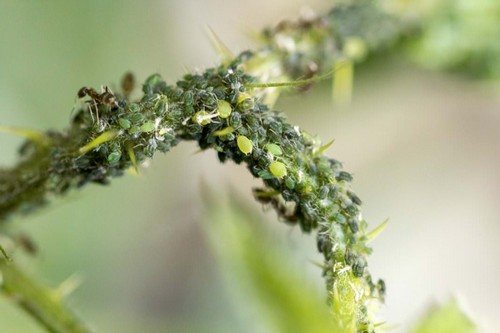
Saving cabbage from the white butterfly
The scourge of cabbage is the white butterfly and cabbage moth, which attack cabbage seedlings as soon as they are in the open ground. Therefore, it is advisable to begin combating these pests no later than 14 days after planting the seedlings, giving them time to take root.
And in this case, mustard powder in combination with tobacco crumbs will be an effective remedy. Taking 1 glass of each component, mix them together, pouring 10 liters. water. After 3 days, the mixture is filtered through cheesecloth, then the plant itself and the soil between the rows are treated with it throughout the entire season with an interval of 10 days.
Helping vegetables against attacks from onion and carrot flies
In warm weather, onion flies become more active and can destroy onion sets.Plant protection should be taken care of even when planting the seed material in the soil, adding hot powder mixed with wood ash in a ratio of 1 to 3 to the holes. The aisles are treated a second time after the length of the feathers on the onion reaches 5 cm. The third treatment is carried out after 14-15 days.
The same remedy will help in the fight against the carrot fly, which destroys not only carrots, but also parsnips, parsley, and celery. But, unlike the onion fly, this type of insect is active throughout the summer season. Therefore, it is necessary to fight it all summer, right up until the harvest.
Saving potatoes from wireworms
Potatoes are a coveted delicacy for the larvae of the click beetle - wireworm. This harmful insect lives in the soil, gnawing passages in potato tubers. Mustard powder, sprinkled into each hole when planting potatoes, can scare away the pest and protect the crop.
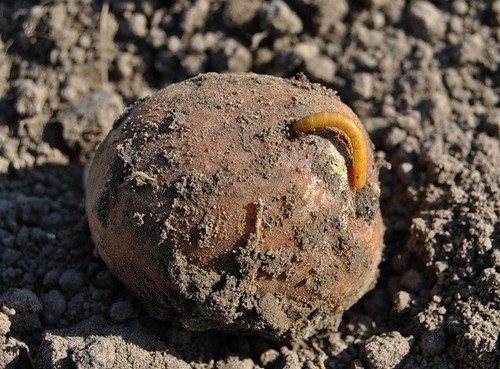
Help for plantings when attacked by beet and cruciferous flea beetles
Radishes, beets, cabbage and other vegetables often suffer from attacks by harmful fleas. Mustard can help significantly reduce the number of these pests. The beet crop can be saved by watering with a mustard solution. It is enough to dissolve 100 g of mustard in 10 liters of water, after 2 hours the beets can be watered with the resulting mixture.
And for the cruciferous flea beetle, a more aggressive solution is needed, with the addition of a tablespoon of 70% acetic acid. Plantings are sprayed as soon as the appearance of harmful insects is noticed.
Weed control
Hot powder is an excellent remedy not only for pests, but also for weeds. Mustard suspension will help to get rid of weeds quickly. Mix 8 tbsp.yellow powder with 10 l. water, water the grassy area. The suspension should be used immediately after preparation. In this way, you can rid the area of weeds for a long time.
In addition to the powder, some gardeners use the cake left after squeezing the oil out of mustard. This substance is used to feed the soil and disinfect the area. The cake applied in the fall acts as a fertilizer, and when applied in the spring it turns out to be an effective means for disinfection, mulching, and improving the structure of the soil.
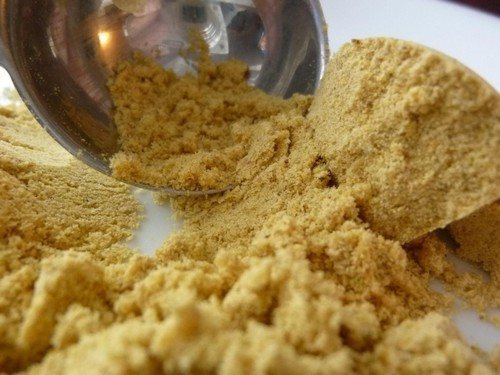
Basic rules for using mustard powder
- To ensure that the use of mustard does not harm the plantings, you need to know how to properly process the hot seasoning.
- You can use dry powder in pest control in any weather. Liquid mixtures will bring the desired effect only in the absence of rain, fog and heavy dew.
- It is recommended to spray plants early in the morning or in the evening. Bright sun increases the rate of evaporation of the solution, which can cause burns to plant crops.
- Plants are treated starting from mid-April, making sure that night frosts have ended. At the same time, the air temperature during the day should not fall below +10OWITH.
- The crop treatment is repeated every 15-20 days. The last time mustard is used is 10 days before harvest.
Using mustard powder wisely, you can protect your crops and achieve high yields without the use of chemicals.


